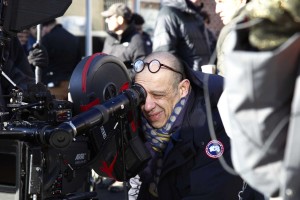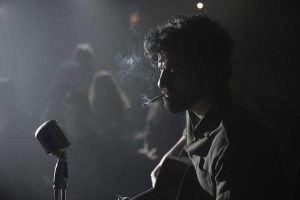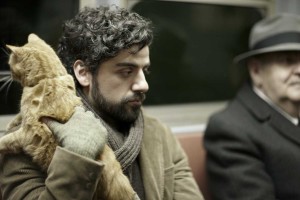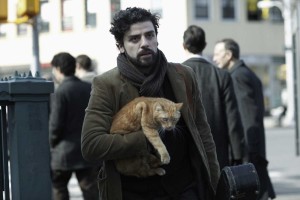
Inside Llewyn Davis, the bittersweet new movie by Oscar winners Joel and Ethan Coen, takes place in the burgeoning Greenwich Village folk music scene in 1961. The title character is a singer and guitarist, played by Oscar Isaac, who is trying to make his way amidst a bevy of other folk wannabes. But he’s beset by misfortunes, many of them of his own creation and the result of personal failings.
The film is very specific in its time and setting. But director of photography Bruno Delbonnel, who recently won the New York Film Critics Circle award for best cinematography for his work on Llewyn, was not going for historical authenticity in his toned-down, soft-grained lensing. “I went for the mood of the script more than recreating any specific period look,” the French DP noted. “First I’m a Parisian, not a New Yorker, so I don’t know what New York was like in the ’60s. What I tried to do was follow an idea, which was the mood of the movie which is about sadness. It was not 1961 New York City. It was New York in winter and a very sad story.”

There was one period artifact that served as a visual inspiration, the cover of Bob Dylan’s Freewheelin’ album from around that time, which shows him with a girlfriend walking down a snow-covered street in lower Manhattan. “You can feel the slushy, cold New York winter in that photo,” noted the cinematographer. “The main thing was to avoid being too pretty.”
Llewyn is full of folk music performances, one of the pleasures of the film, sung live by the title character and others, including one played by Justin Timberlake. They mainly take place at the Gaslight Café, an iconic Village venue at the time. It no longer exists but was recreated by production designer Jess Gonchor.
Delbonnel, meanwhile, saw the arc of the film as a kind of folk song. “If you listen to folk songs usually they are very sad, they’re about hope but a hope that doesn’t lead to anything,” he observed. “I also thought of Llewyn’s story as a folk song and I thought it could be interesting to ‘build’ the light as kind of a folk song as well. The Gaslight Café would become the ‘chorus,’ like the refrain of the movie – dark, contrasty, almost colorless.”
 The film has “a very strange color palette. I wanted it to be disturbing – a lot of magenta but we killed all the yellow and had almost no blue,” said the cinematographer. The movie was shot on an Arricam camera using Kodak film stock, both favorite tools of Delbonnel. “We thought briefly of shooting with a digital camera, but that lasted about 30 seconds.”
The film has “a very strange color palette. I wanted it to be disturbing – a lot of magenta but we killed all the yellow and had almost no blue,” said the cinematographer. The movie was shot on an Arricam camera using Kodak film stock, both favorite tools of Delbonnel. “We thought briefly of shooting with a digital camera, but that lasted about 30 seconds.”
So how was it working with the Coen brothers, who are known for being so intertwined they finish each other’s thoughts?
“I was a bit afraid of them at the beginning. Do I talk to Joel more than Ethan, or Ethan more than Joel,” the DP confided. “When I first met them I asked ‘How do we work? How do you work? Who am I supposed to talk to?’ They said ‘You can talk to both of us or either one. If one of us is somewhere making a phone call you can talk to the other.’ Often I talked to both. When there is a conflict you are not part of the conversation. It’s between them. And they find a solution and they’d say, this is what we’re going to do. You are never put in the middle of something.”
 When lining up a shot, both were there with the DP. “I would make a suggestion about where to put the camera,” he explained. Both of them would look through the viewfinder and then say yes or no. It was actually a very simple and efficient process.”
When lining up a shot, both were there with the DP. “I would make a suggestion about where to put the camera,” he explained. Both of them would look through the viewfinder and then say yes or no. It was actually a very simple and efficient process.”
His takeaway from the experience? “This one is for me a classic,” said Delbonnel. “The way that Joel and Ethan shoot is amazing. There’s the meat but no gravy – nothing extraneous. It’s very straightforward. The camera almost never moves. The shots are very simple, but the way they put them together is very unique. I learned a lot.”
Delbonnel has been nominated for an Academy Award for best cinematography three times – for Amelie (2002), A Very Long Engagement (2005) and Harry Potter and the Half-Blood Prince (2010). He recently finished shooting Wide Eyes for director Tim Burton.





